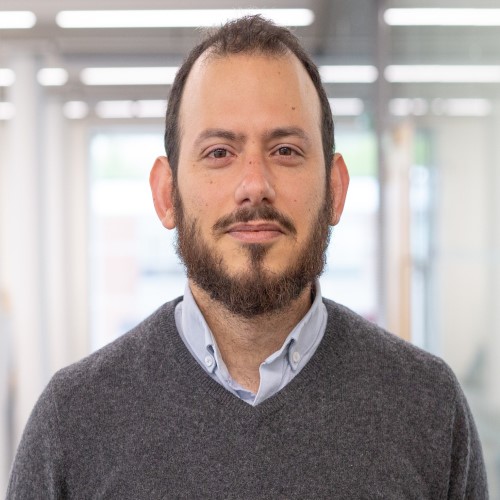Petros Siegkas

Lecturer
Department of Mechanical Engineering and Materials Science and Engineering
petros.siegkas@cut.ac.cy
25002035
Dr Siegkas is a lecturer in Mechanical Design and Additive Manufacturing, at the Department of Mechanical Engineering and Material Science and Engineering at the Cyprus University of Technology. Dr Siegkas’ research interests include developing and implementing experiment and modelling techniques related to material behaviour (e.g. porous, polymers, alloys) and impact energy management in a wide range of applications and component designs, including biomechanics, aerospace, automotive, sport and other. Projects have often involved close collaboration with both industrial and academic partners from various fields. Current topics of interest include 3D printed meta-materials, personalised equipment, biomechanics and other.
Professional Experience: [...]
Teaching
Dr Siegkas has been previously engaged with the CDIO global initiative (educational framework for engineering) and was involved in curriculum development with modules such as Innovation and Engineering Solutions, Sports Technology, Industrial design and Product Case Studies, Mechanical Engineering in Sport and Optimisation of Sports Equipment. He is currently teaching 3rd year Machine Element Design at CUT.
Siegkas, Petros. "INTRODUCTION TO INDUSTRIAL DESIGN AND PRODUCT CASE STUDIES." The 17th International CDIO Conference
Ahmed Tamkin, Siegkas Petros. “INTEGRATED CAD AND REVERSE ENGINEERING TO ENHANCE CONCEPTION AND DESIGN”. The 17th International CDIO Conference
Siegkas, Petros. "REVERSE ENGINEERING AND INTRODUCTION TO ENGINEERING DESIGN." The 16th International CDIO Conference. Vol. 2.
Publications
Siegkas, Petros. "A Computational Geometry Generation Method for Creating 3D Printed Composites and Porous Structures." Materials 14.10 (2021): 2507.
Iizuka, Makoto, et al. "Large deformation finite element analyses for 3D X-ray CT scanned microscopic structures of polyurethane foams." Materials 14.4 (2021): 949.
Donat, Cornelius K., et al. "From biomechanics to pathology: predicting axonal injury from patterns of strain after traumatic brain injury." Brain 144.1 (2021): 70-91.
Melia, Georgia, et al. "Insoles of uniform softer material reduced plantar pressure compared to dual-material insoles during regular and loaded gait." Applied Ergonomics 91 (2021): 103298.
Elmrabet, Nabila, and Petros Siegkas. "Dimensional considerations on the mechanical properties of 3D printed polymer parts." Polymer Testing (2020): 106656.
Siegkas, Petros, David J. Sharp, and Mazdak Ghajari. "The traumatic brain injury mitigation effects of a new viscoelastic add-on liner." Scientific reports 9.1 (2019): 1-10.
Pedrazzini, S., Galano, M., Audebert, F., Siegkas, P., Gerlach, R., Tagarielli, V. L., & Smith, G. D. W. (2019). High strain rate behaviour of nano-quasicrystalline Al93Fe3Cr2Ti2 alloy and composites. Materials Science and Engineering: A, 764, 138201.
Siegkas P, Petrinic N and Tagarielli VL. Measurements and micro-mechanical modelling of the response of sintered titanium foams, Journal of the Mechanical Behavior of Biomedical Materials, 2016, 57: 365-375
Simone F, Siegkas P, Barbieri E and Petrinic N. A new method for the generation of arbitrarily shaped 3D random polycrystalline domains J. Computational Mechanics, 2014
Siegkas P, Tagarielli VL, Petrinic N and Lefebvre LP. Rate Dependence of the Compressive Response of Ti Foams. Metals (special issue), 2012, 2: 229-237.
Siegkas P, Tagarielli VL, Petrinic N and Lefebvre LP. The compressive response of a titanium foam at low and high strain rates, 2011, J Mater Sci, 46: 2741–2747
Conference
Montanari, Mattia, et al. "Nurbs-based isogeometric analysis for ballistic evaluation of titanium plates." (2016).
Siegkas, P., V. Tagarielli, and N. Petrinic. "Modelling stochastic foam geometries for FE simulations using 3D Voronoi cells." Procedia Materials Science 4 (2014): 221-226.
Engineering Education
Siegkas, Petros. "INTRODUCTION TO INDUSTRIAL DESIGN AND PRODUCT CASE STUDIES." The 17th International CDIO Conference
Ahmed Tamkin, Siegkas Petros. “INTEGRATED CAD AND REVERSE ENGINEERING TO ENHANCE CONCEPTION AND DESIGN”. The 17th International CDIO Conference
Siegkas, Petros. "REVERSE ENGINEERING AND INTRODUCTION TO ENGINEERING DESIGN." The 16th International CDIO Conference. Vol. 2.
Research activity
Indicative project examples:
Porous-Cellular Materials
Dr Siegkas’ has worked on developing experiments and modeling techniques to characterise and model the static and dynamic performance of porous- cellular materials for use as biocompatible bone implants, and applications within the aerospace industry. Experiments involved mechanical testing at various strain rates and included the use of high speed photography, in-situ SEM, X-ray micro-tomography and image analysis.
A computational method was developed for virtually generating porous material prototypes and capturing their mechanical behaviour at different scales thus providing a tool for virtual prototyping and characterisation, based on application requirements. The foam geometries were generated in Matlab using a method based on Voronoi polyhedrals, that could either mimic geometrical features (e.g. pore size distribution) obtained by X-ray tomography analysis or generate new prototype geometries. The geometries were then subjected to uniaxial and multiaxial mechanical loading at the mesoscale level from which the macroscale properties were obtained. The virtual specimens were simulated using finite element techniques (Abaqus) at different strain rates. The project was partially funded by Rolls Royce, EPSRC and in collaboration with the IMI Canada.
The computational method algorithms were then further developed and used in generating 3D printed porous materials and composites. The structures are either porous of a single material or composites of two materials that are geometrically intertwined. The method is used to produce and explore promising material combinations that could otherwise be difficult to mix. It is potentially applicable with a variety of additive manufacturing methods, size scales, and materials for a range of potential applications.
Metal Alloys-Ballistics-Aerospace Components
Dr Siegkas worked on the ballistic performance of granular materials (including Nickel at high temperatures up to 800 degrees Celsius and Titanium alloys at room temperature) and jet engine components. The research was related to aviation safety and impact energy management (i.e. jet engine fan blade off e.t.c.).
The projects were focused in designing experiments and generating data for material model calibration and validation, or used for the development and optimisation of new materials. The aim was to capture the material mechanisms involved in managing energy dissipation and related to application requirements. The projects were in collaboration with industrial partners (Rolls Royce, TIMET) and the work has received a departmental award under the University of Oxford departmental recognition scheme. Results were subject to publishing restrictions.
Traumatic Brain Injury and Protective Equipment
Dr Siegkas worked on projects related to understanding and preventing traumatic brain injury. The work involved implementing finite element models and extracting information as to regions of the brain that were mechanically affected by impact loading.
Part of the work was funded by the ‘’Welcome trust network of excellence’’ and was carried by a multidisciplinary team from the fields of biology, neuroscience and solid mechanics. Other parts of the work were funded by the Welsh Government and in a collaboration between Imperial College and industrial partners (Dainese-AGV manufacturer of motorcycle helmets, Rheon labs manufacturer of liner add-on material). Dr Siegkas' role involved both experiments and computational modelling. Experiments included liner material characterisation (polymer), drop tower experiments on helmets (with and without added liner) and fitted on an instrumented head form. Modelling included using a head and brain model to extract information regarding potential injury and a full helmet-head form (Hybrid III) model of the drop tower tests aiming to extract information for further liner design and optimisation.
Funding bodies
Undertaken projects were funded in collaboration with industrial, public and academic partners with expertise from multiple disciplines including: Rolls Royce, TIMET, Dainese, Rheon labs, Bridgestone (Japan), Division of Brain sciences Imperial College London, EPSRC, Welsh Government and Welcome Trust Network of Excellence.
